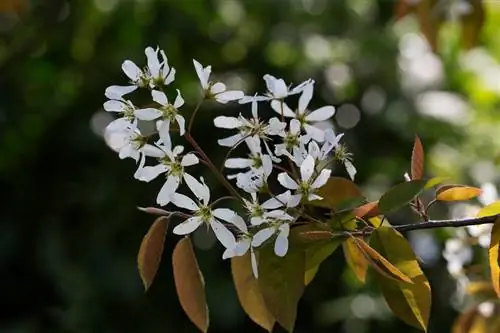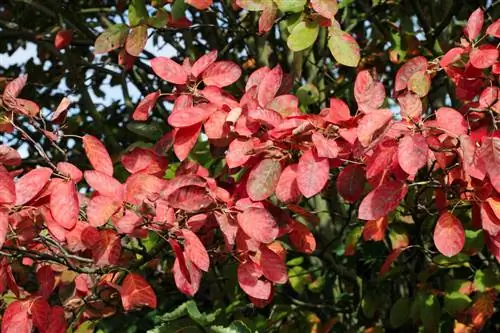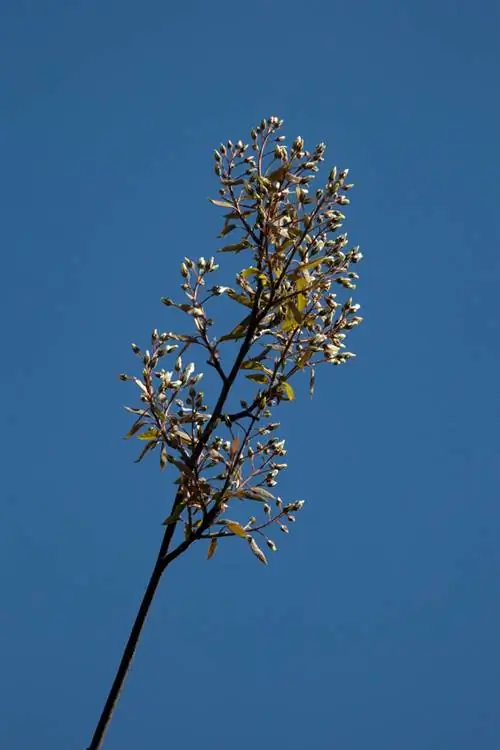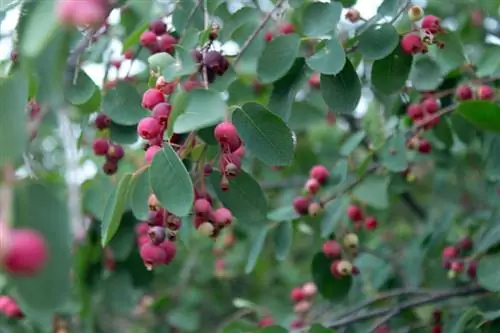- Author admin [email protected].
- Public 2023-12-16 16:46.
- Last modified 2025-01-23 11:20.
The copper rock pear is a robust and easy-care shrub that is not susceptible to diseases and pests. Like many rose plants, it can be affected by fire blight. Even powdery mildew does not stop at copper rock pear.
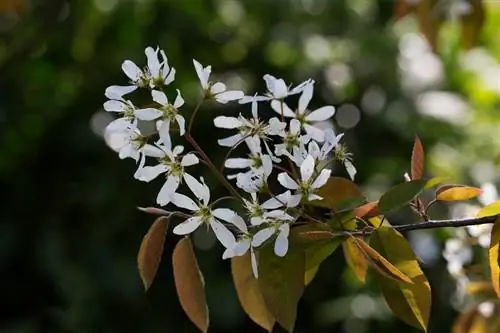
What diseases can affect the copper rock pear?
The most common diseases of the copper rock pear are fire blight and powdery mildew. Fire blight is manifested by wilting, brown-black leaves and drying branches, while powdery mildew can be recognized by a white coating on leaves and fruits. Prevention and treatment of both diseases require pruning measures and, if necessary, pesticides.
The varieties of copper rock pear, which are derived from a wild species, are more resistant to pests and pathogens than the cultivated and refined varieties. In general, the copper rock pear is not considered to be susceptible to disease. Since it is only closely related to the pear, it cannot suffer from the dreaded pear rust. Fire blight and powdery mildew are most common in copper rock pear (also called currant tree).
The Firebrand
Fire blight is a bacterial disease that results in the leaves wilting and turning brown to black, and the branches drying out and dying. In the case of fire blight infestation, only radical pruning measures can actually help, whereby all affected parts of the plant must be removed. Only he althy wood can be left standing, even if cutting is sometimes difficult.
Powdery mildew
When powdery mildew attacks, the leaves and fruits develop a white coating and dry out. The fungal disease is promoted by prolonged moisture and incorrect location. In addition, dense foliage makes it difficult for rainwater to evaporate, creating conditions for the spread of mildew. The following measures serve to prevent or provide relief:
- cut back the affected shoots so that the fungus cannot overwinter there,
- For prevention, spray the Amelnchier lamarckii with a commercially available pesticide, starting before the leaves emerge,
- Ensure sufficient ventilation in the crown by thinning the branches.
Tip
Other fungi such as Verticilium or Phytophtera also have an easy time of it if there is enough moisture in the soil and can even attack resistant plants.

